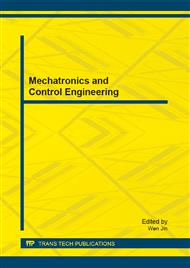p.396
p.401
p.409
p.419
p.425
p.430
p.436
p.440
p.446
Simulation Analysis on Ride Comfort of Heavy Vehicle
Abstract:
In this paper, a detailed rigid-flexible coupling multi-body dynamic model of heavy vehicle was established using multi-body dynamics method, and B class road model was built using harmonic superposition method. Then, the platform of heavy vehicle dynamics simulation was established. The driver seat acceleration and tire dynamic load were simulated at different speeds under the input of different random road excitations. According to the ride comfort evaluation method provided by ISO2631-1, total weighted root-mean-square (RMS) acceleration evaluation method was used to evaluate the ride comfort of heavy vehicle at different ride speeds.
Info:
Periodical:
Pages:
425-429
Citation:
Online since:
July 2013
Authors:
Price:
Сopyright:
© 2013 Trans Tech Publications Ltd. All Rights Reserved
Share:
Citation:


